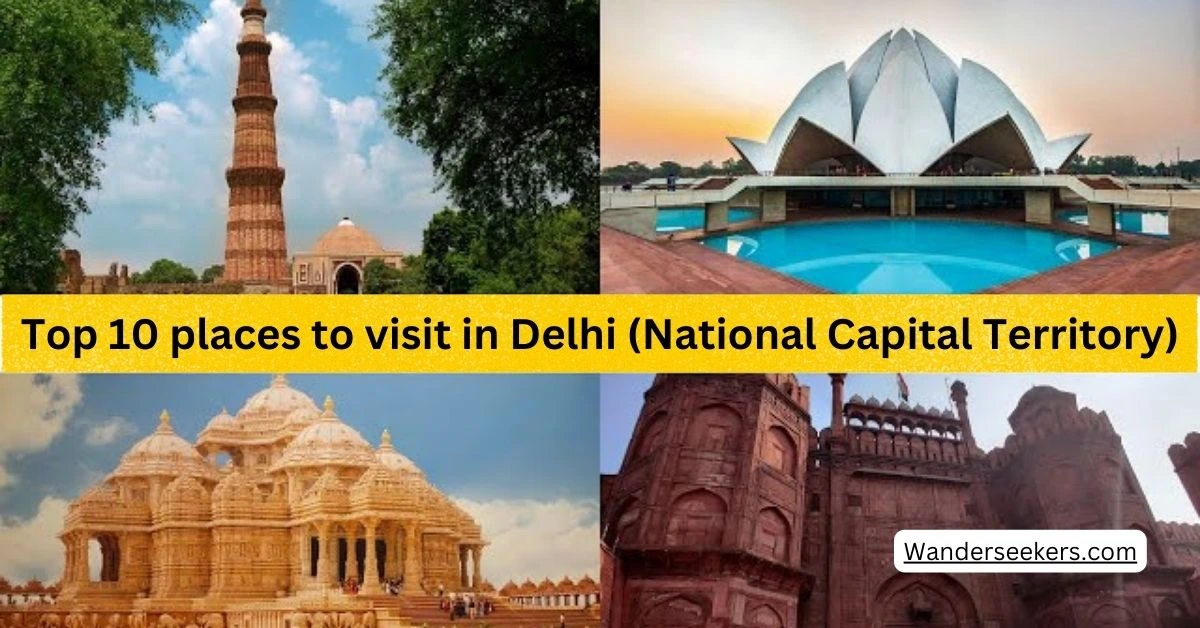Delhi, the vibrant capital of India, offers a blend of history, culture, and modernity. From majestic forts to bustling markets, it’s a city of endless exploration. Here’s a detailed guide to the top 10 places to visit in Delhi:
Table of Contents
Top 10 places to visit in Delhi
1. Red Fort (Lal Qila)
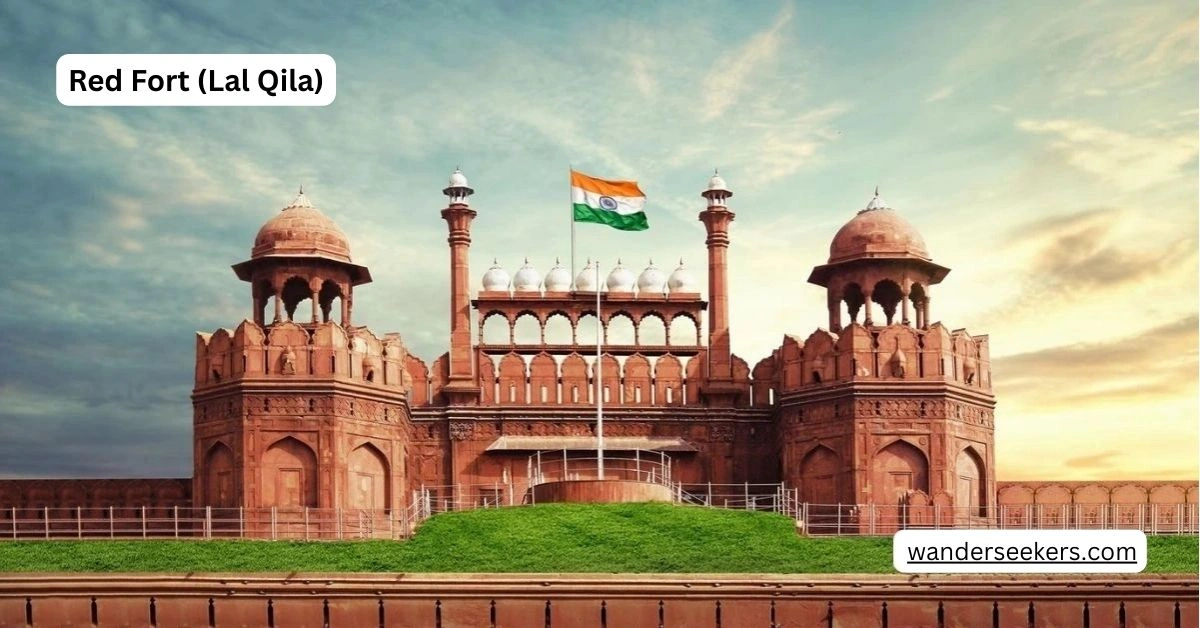
The Red Fort, also known as Lal Qila, is a magnificent historical monument in Delhi, India, built by Mughal Emperor Shah Jahan in 1648. This UNESCO World Heritage Site served as the primary residence for Mughal emperors for nearly two centuries. Crafted from striking red sandstone, the fort showcases a blend of Persian, Timurid, and Indian architectural styles. Its sprawling complex houses iconic structures such as the Diwan-i-Aam, Diwan-i-Khas, Rang Mahal, and Moti Masjid, each with intricate designs and artistic detailing.
2. India Gate
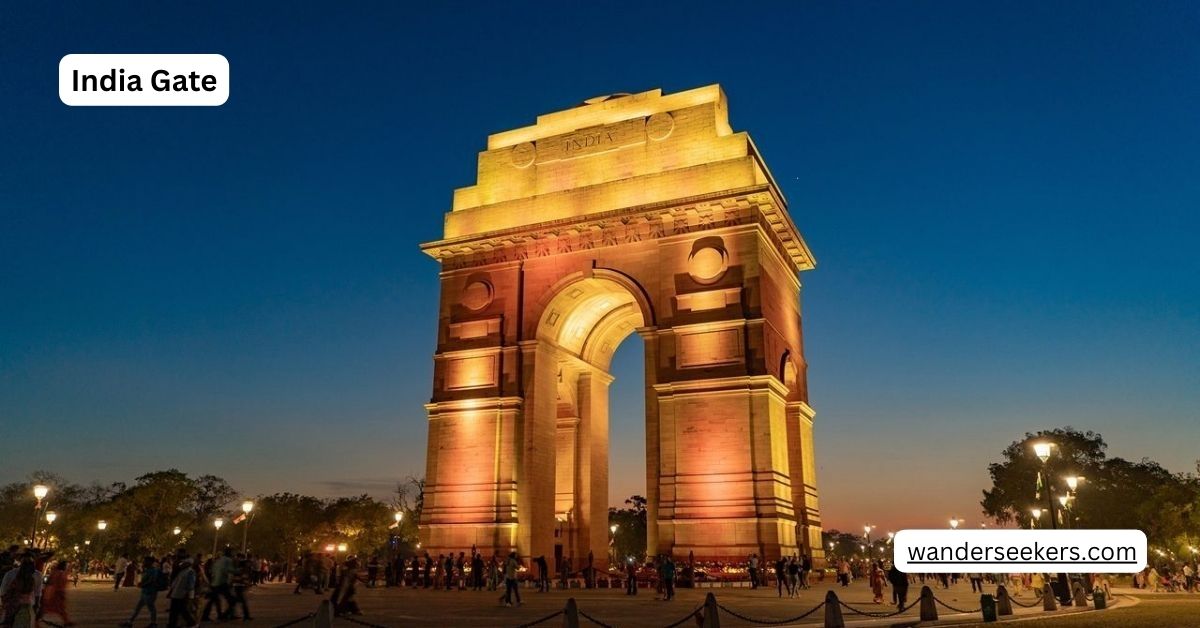
India Gate, located in New Delhi, is a majestic war memorial and one of India’s most iconic landmarks. Designed by British architect Sir Edwin Lutyens and completed in 1931, it commemorates the 82,000 Indian soldiers who lost their lives during World War I and the Third Anglo-Afghan War. Inscribed with the names of these brave soldiers, the monument stands as a solemn reminder of their sacrifice. The structure itself is a 42-meter-high arch made of sandstone, with its impressive design inspired by triumphal arches like the Arc de Triomphe in Paris.
3. Qutub Minar
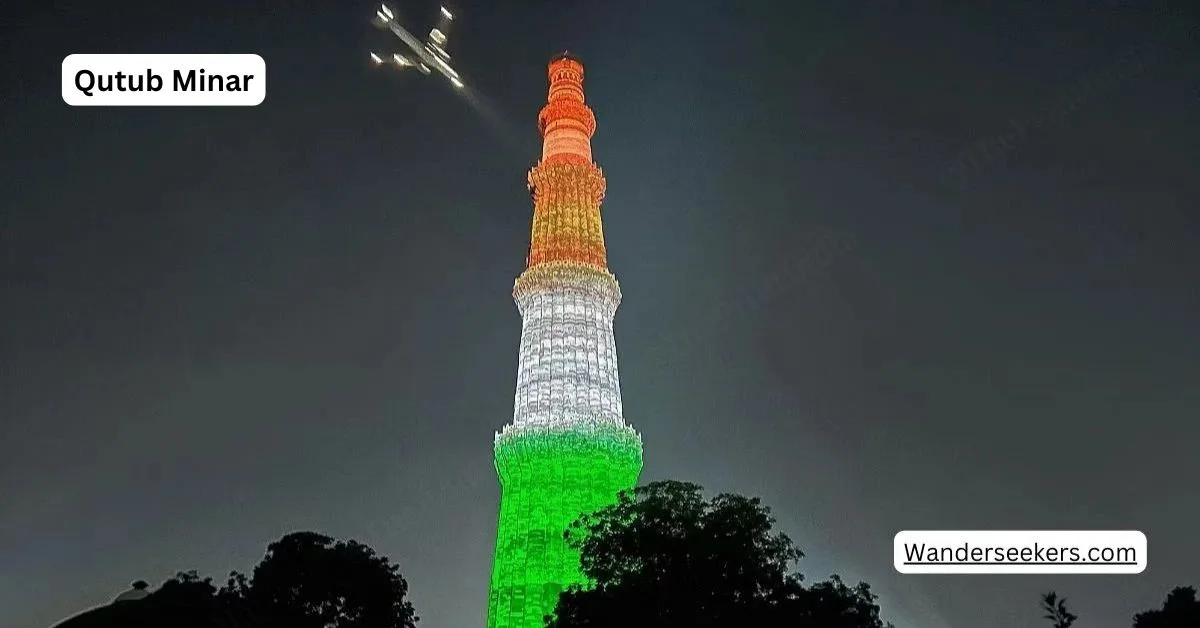
Qutub Minar, located in Mehrauli, Delhi, is a UNESCO World Heritage Site and one of the tallest brick minarets in the world. Constructed in 1193 by Qutb al-Din Aibak, the founder of the Delhi Sultanate, it stands as a masterpiece of Indo-Islamic architecture. Rising to a height of 72.5 meters, the tower is made of red sandstone and marble, adorned with intricate carvings, inscriptions from the Quran, and decorative motifs. The Qutub Minar is part of the Qutub Complex, which includes other historical marvels like the Quwwat-ul-Islam Mosque and the Iron Pillar, renowned for its rust-resistant composition.
4. Lotus Temple
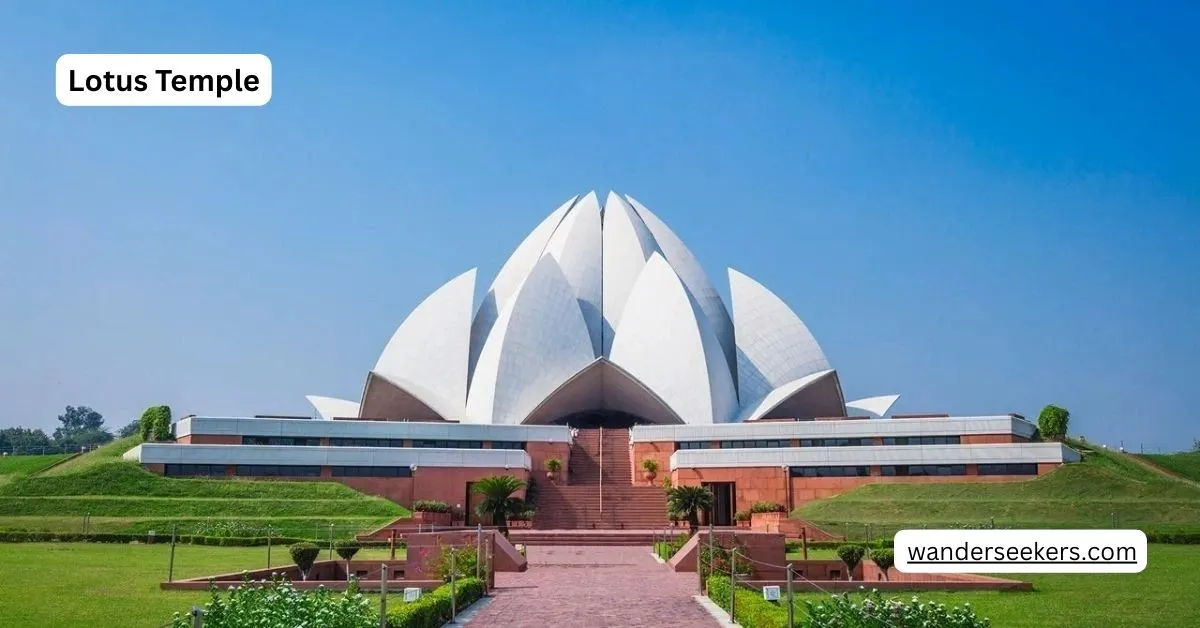
The Lotus Temple, situated in New Delhi, is an architectural marvel and a symbol of unity and peace. Completed in 1986, this Bahá’í House of Worship was designed by Iranian-Canadian architect Fariborz Sahba. Its distinctive lotus-like structure, made of white marble, consists of 27 petals arranged in clusters to form nine entrances, symbolizing the inclusivity of all faiths. Surrounded by lush gardens and reflecting pools, the temple provides a serene and meditative environment for visitors.
5. Humayun’s Tomb

Humayun’s Tomb, located in Delhi, India, is a magnificent example of Mughal architecture, built-in 1570. Commissioned by Empress Bega Begum, this grand mausoleum was constructed to honor Emperor Humayun. Designed by Persian architect Mirak Mirza Ghiyas, the tomb is set within a Charbagh—a Persian-style garden symbolizing paradise. Its design features red sandstone and white marble, creating a striking visual blend. This architectural marvel not only houses Humayun’s grave but also serves as the resting place for various Mughal royals.
6. Akshardham Temple

Akshardham Temple, also known as Swaminarayan Akshardham, is a magnificent spiritual and cultural complex in Delhi, India. Opened in 2005, it was inspired by Yogiji Maharaj and created by Pramukh Swami Maharaj under the Bochasanwasi Shri Akshar Purushottam Swaminarayan Sanstha (BAPS). The temple showcases India’s rich heritage, spirituality, and architectural brilliance. Constructed using Rajasthani pink sandstone and Italian Carrara marble, the temple is adorned with intricate carvings depicting deities, flora, and fauna.
7. Chandni Chowk
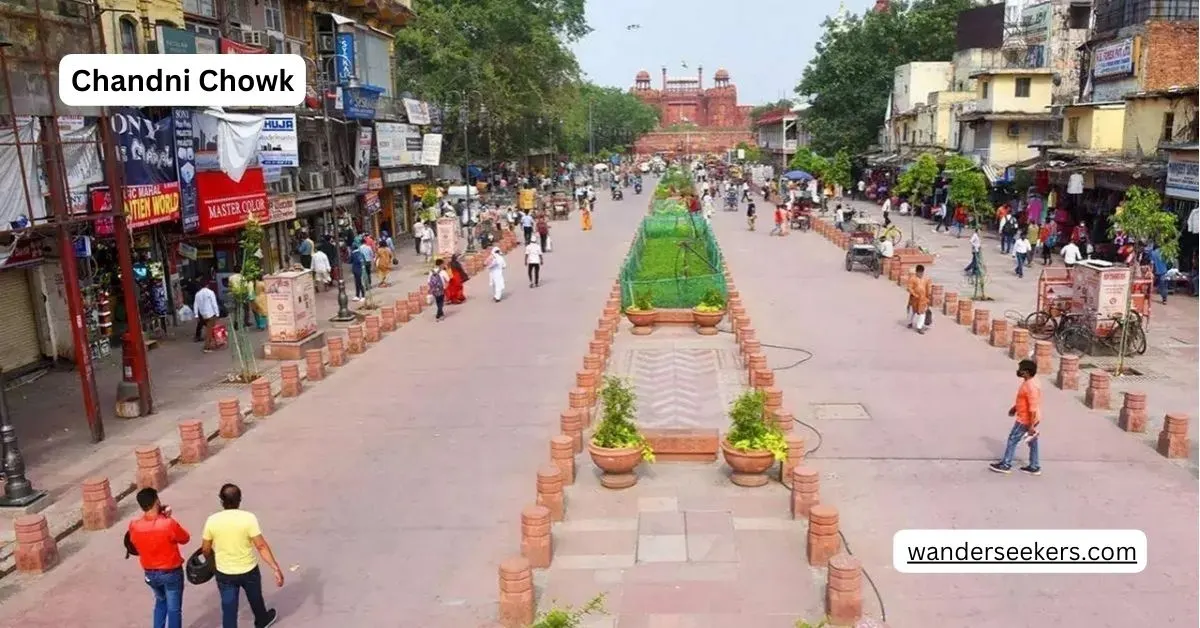
Chandni Chowk, located in Old Delhi, is one of India’s oldest and busiest markets, brimming with history and culture. Established in the 17th century by Mughal Emperor Shah Jahan and designed by his daughter Jahanara Begum, it was originally a grand marketplace with a central pool reflecting moonlight, which inspired its name, meaning “Moonlight Square.” Over the centuries, Chandni Chowk has transformed into a bustling hub of commerce, offering everything from textiles and jewelry to spices and street food.
8. Raj Ghat

Raj Ghat is a solemn memorial dedicated to Mahatma Gandhi, located on the banks of the Yamuna River in Delhi, India. It marks the site where Gandhi was cremated on January 31, 1948, following his assassination. The memorial features a simple black marble platform with an eternal flame, symbolizing Gandhi’s enduring legacy. The words “Hey Ram,” believed to be his last utterance, are inscribed on the platform. Surrounded by lush greenery, Raj Ghat is a place of reflection and homage. Visitors, including dignitaries from around the world, often pay their respects here.
9. Lodhi Garden
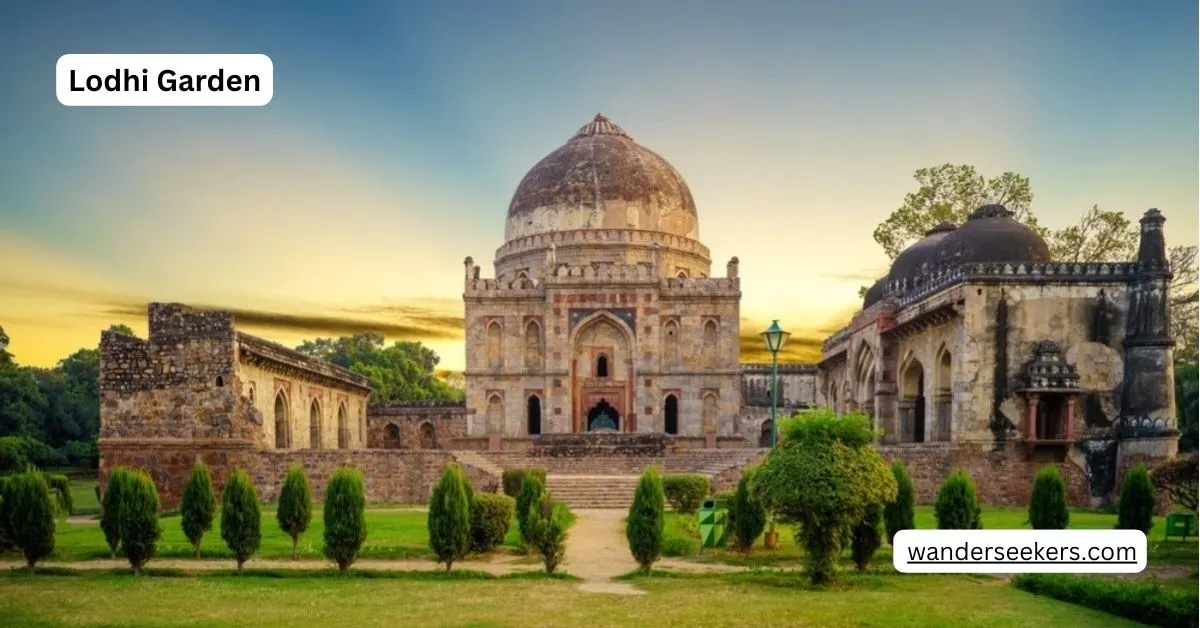
Lodhi Garden, located in New Delhi, India, is a serene public park that beautifully blends history and nature. Spanning 90 acres, it is home to several architectural marvels from the Delhi Sultanate era, including the tombs of Muhammad Shah and Sikandar Lodi, as well as the Bara Gumbad and Shisha Gumbad. These structures, dating back to the 15th and 16th centuries, showcase a mix of Indo-Islamic architectural styles. The garden is a popular spot for morning walks, picnics, and yoga sessions, offering a peaceful escape from the city’s hustle.
10. National Museum
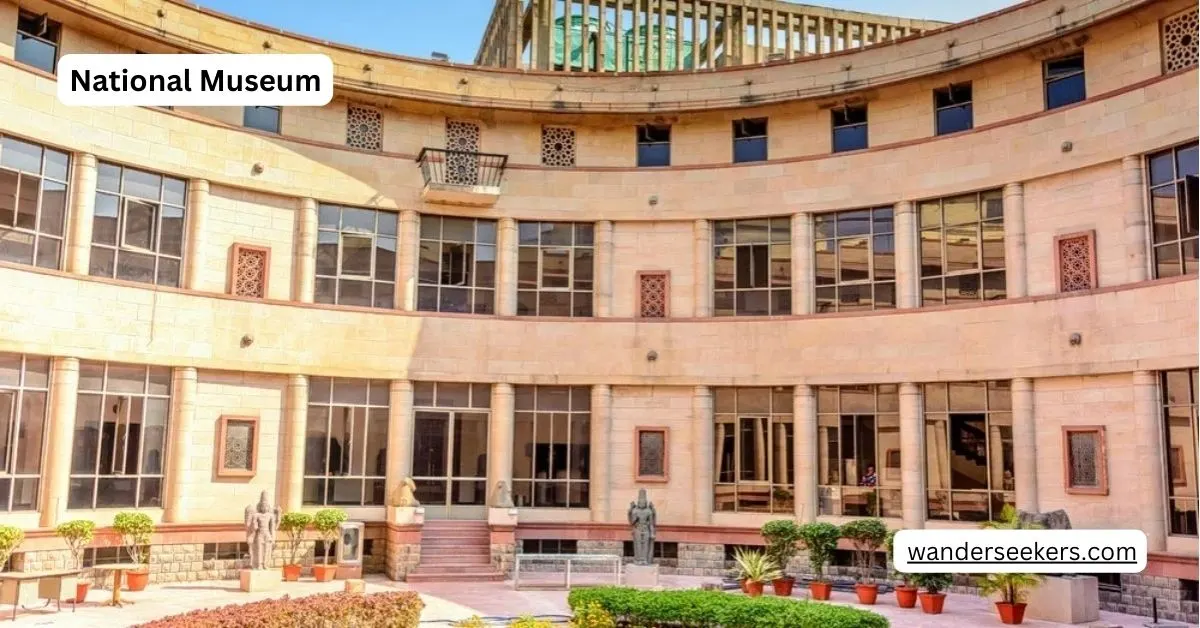
The National Museum in New Delhi is one of India’s largest and most prestigious museums, showcasing a vast collection of artifacts spanning over 5,000 years of history. Established in 1949, it is located on Janpath and functions under the Ministry of Culture, Government of India. The museum houses around 200,000 objects, including sculptures, paintings, manuscripts, textiles, and archaeological treasures. Highlights of the collection include the Dancing Girl from Mohenjo-daro, ivory carvings, Akota bronzes, and intricately carved wooden vahanas.
Conclusion
Delhi presents an enchanting blend of history, culture, and modern life through these remarkable destinations. Whether you’re marveling at Mughal architecture or indulging in street food, each place offers a unique glimpse into the heart of this vibrant city.
